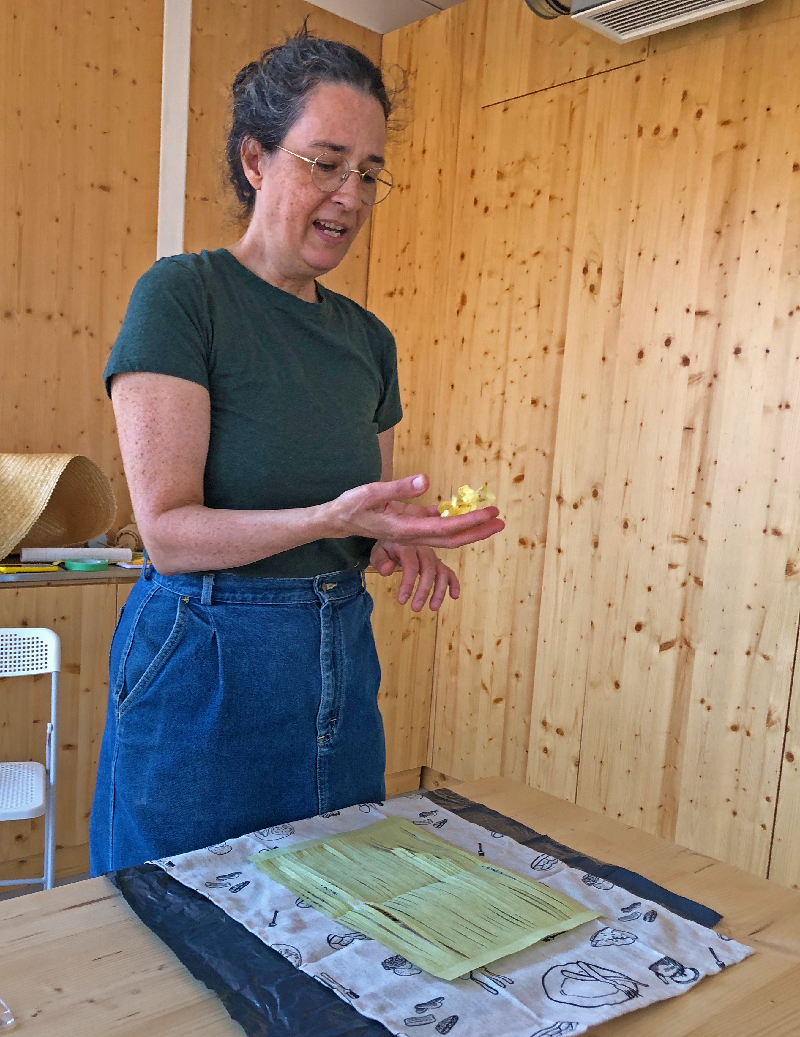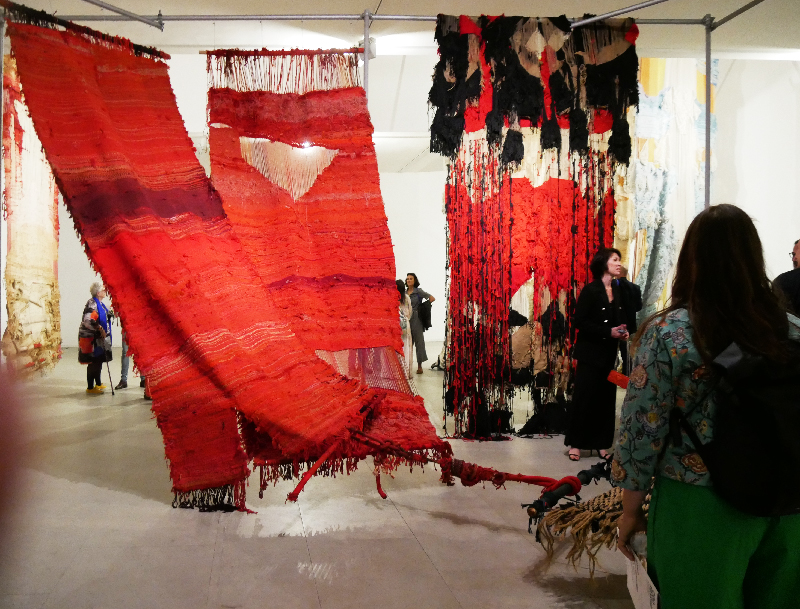
Contextile Teil 2
Am 7. September 2024 gab es auf der Contextile 7 mehr als nur eine sehr wichtige internationale Textilkunstausstellung. Es gab begleitende Veranstaltungen wie die Textilkunstausstellung des Gastlandes Kanada, die Ausstellung aller Bildungsinstitute in Portugal, die textile Lehrgänge anbieten, und die fantastische Ausstellung mit Werken von Josep Grau-Garriga, die vielen der jüngeren Besucher, die seine Werke zum ersten Mal sahen, die Augen öffnete! Der folgende Tag war Vorträgen von Contextile-Teilnehmern aus den verschiedenen Ausstellungen und aus verschiedenen Ländern gewidmet. Weitere Veranstaltungen waren Workshops und Ausstellungen der Ergebnisse der künstlerischen Residenzen später im September.
Kanada ist das eingeladene Land: Die Biennale International du Lin de Portneuf ist seit 8 Jahren Partner von Contextile. In diesem Jahr wurden die Kanadier eingeladen, eine Ausstellung aktueller zeitgenössischer Kunst aus Kanada zu kuratieren. Diese Ausstellung zeigt den Drang der kanadischen Künstler, künstlerische Grenzen zu überschreiten, die textile Kenntnisse und konzeptionelle Ansätze zeitgenössischer Praktiken integrieren. Bei der Wahl der Kuratoren lag der Schwerpunkt auf traditionellen Medien wie Stickerei (verwendet von Anna Torma, Caroline Monnet und Barbara Todd), Tapisserie (verwendet von Line Dufour), Weberei (Meghan Price und Hannah Claus) und Jacquardweberei (Ruth Scheuing). Skulpturen kamen in den Werken von Sarah Stevenson und Guillaume Brisson-Darveau zum Einsatz, Installationen zeigten sich auf spektakuläre Weise bei Carole Simard Laflamme, und Videos wurden von Graeme Patterson verwendet. Meine Favoriten waren die atemberaubende Installation eines übergroßen Kimonos aus Papier von Carole Simard Laflamme, deren Präsentation einen ganzen Raum einnahm, und die bekannte Stickereiarbeit von Anna Torma, die ich seit Jahrzehnten bewundere. Ihre Stickereien mit menschlichen Figuren und wilden Tieren zeigen die Fantasie eines Hieronymus Bosch, aber mit einem anderen Geist: ich fühle mich glücklicher, je länger ich ihre Arbeit betrachte!
Die großartige Tapisserie „Destiny and Self-Determination“ wurde teilweise von der organisierenden Künstlerin Line Dufour gewebt, die das erste Panel von 152,40 x 91,44 cm webte. Der zweite Teil im Format 152,40 x 548,60 cm wurde von Gastteilnehmern, sowohl Künstlern als auch Amateuren, gewebt. Der mittlere Teil wächst noch, da Künstler ein unregelmäßig geformtes Stück Tapisserie einsenden können, das zwischen den beiden Hauptteilen positioniert wird. Bis heute sind 1077 fertige Formen aus 44 Ländern eingegangen, gewebt von insgesamt 649 Teilnehmern. Diese unglaubliche Ein-Frau-Initiative, geleitet von Line Dufour, wurde in Deutschland (siehe meinen Blog …), Irland, den USA, Kanada, Uruguay und China ausgestellt.
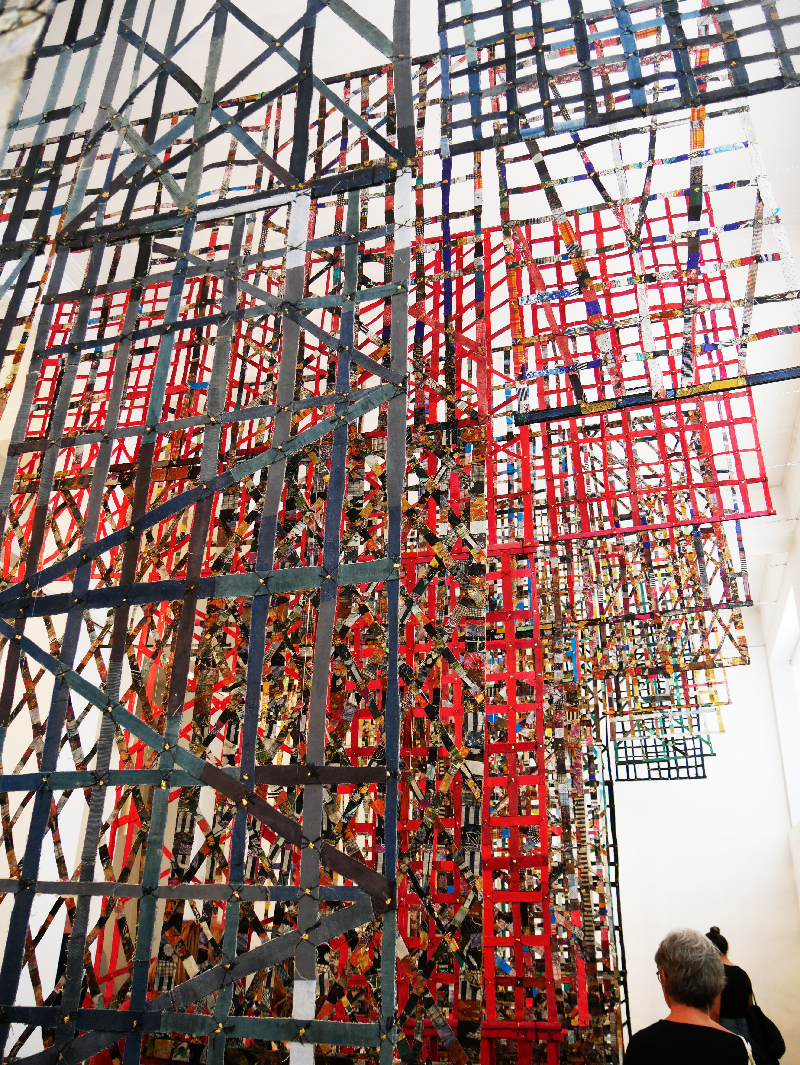
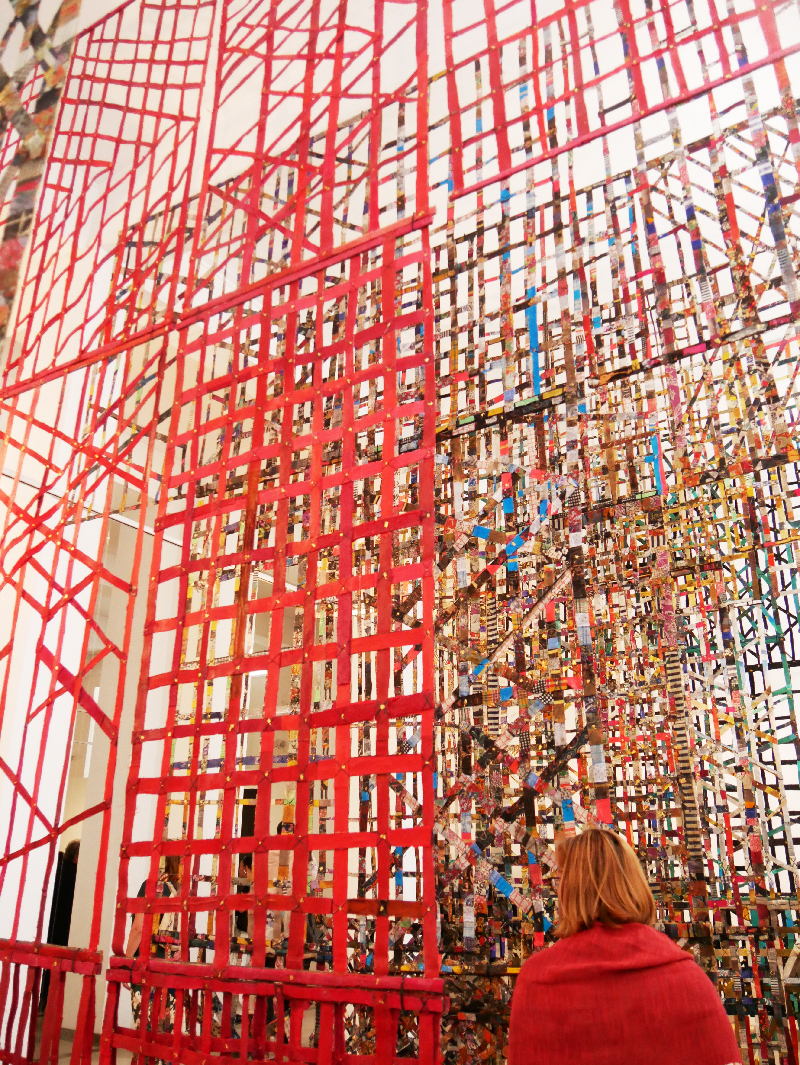
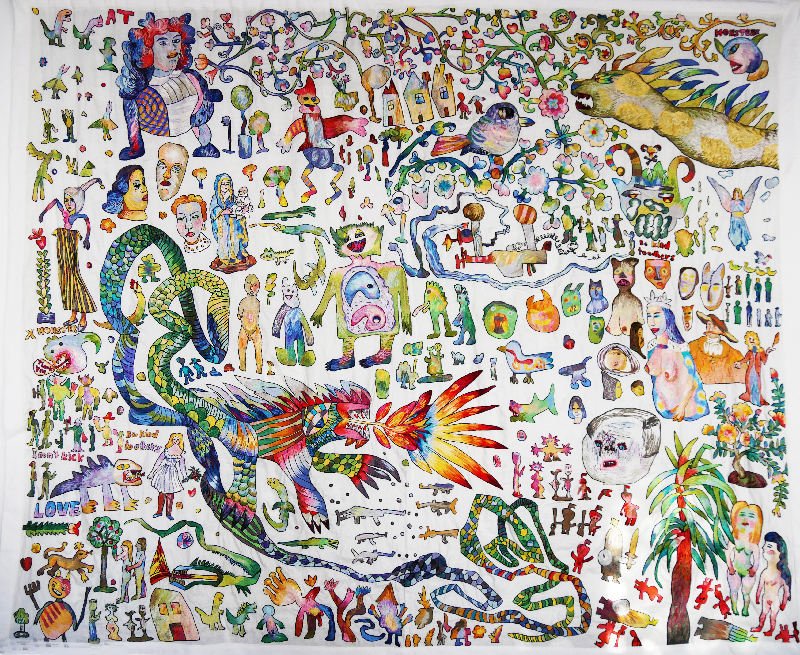
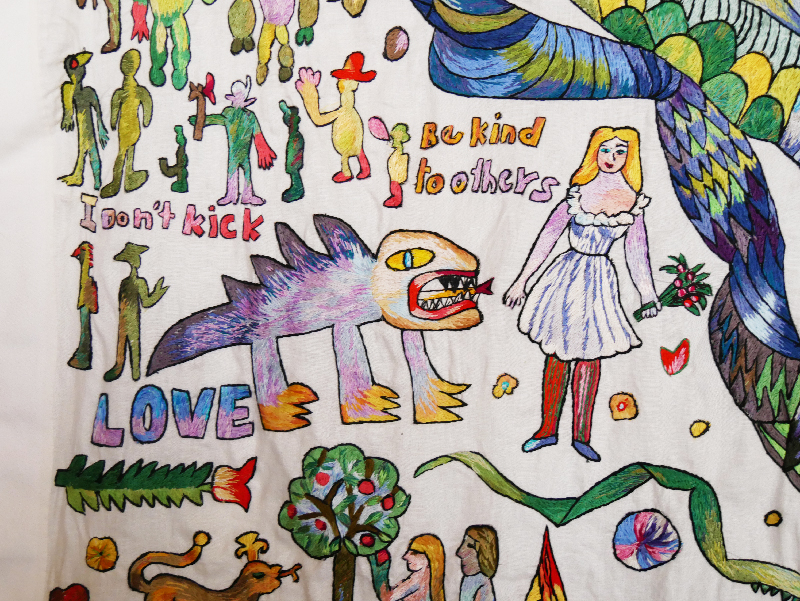
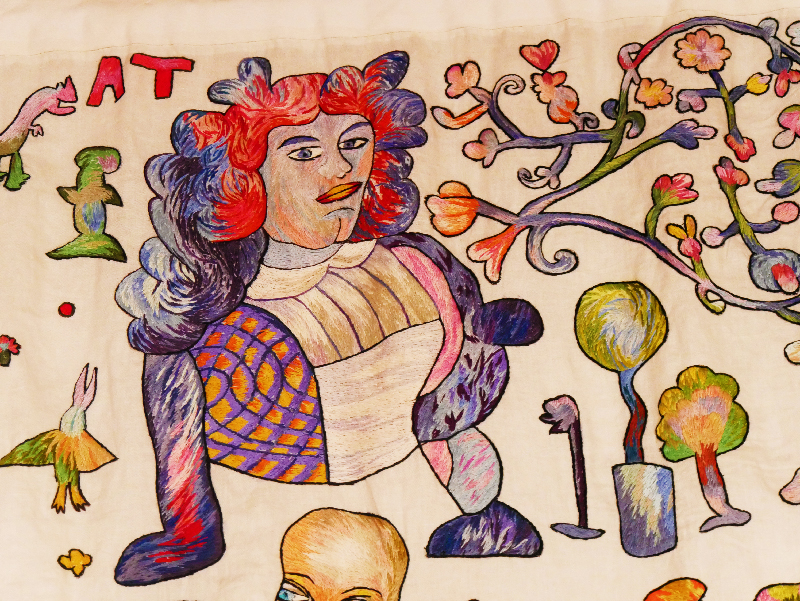
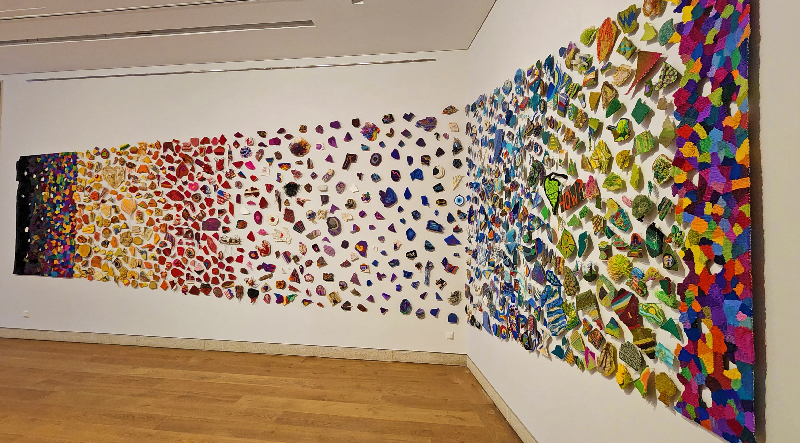
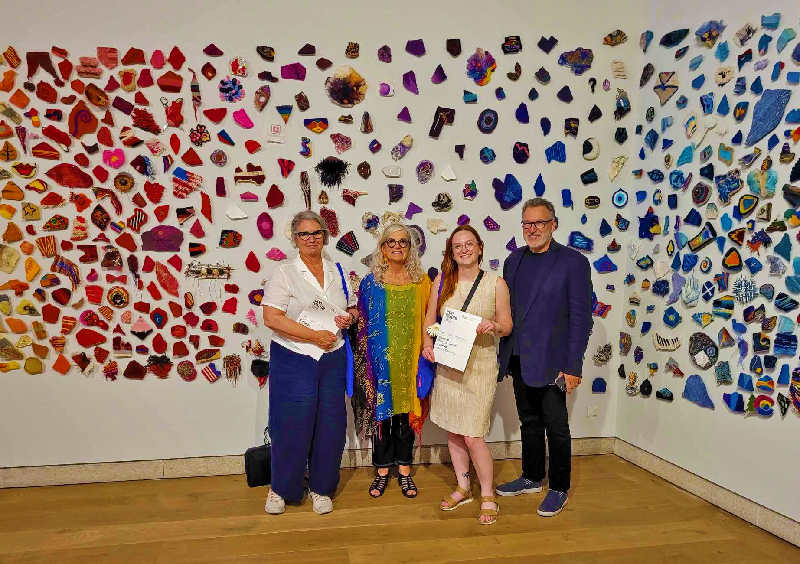
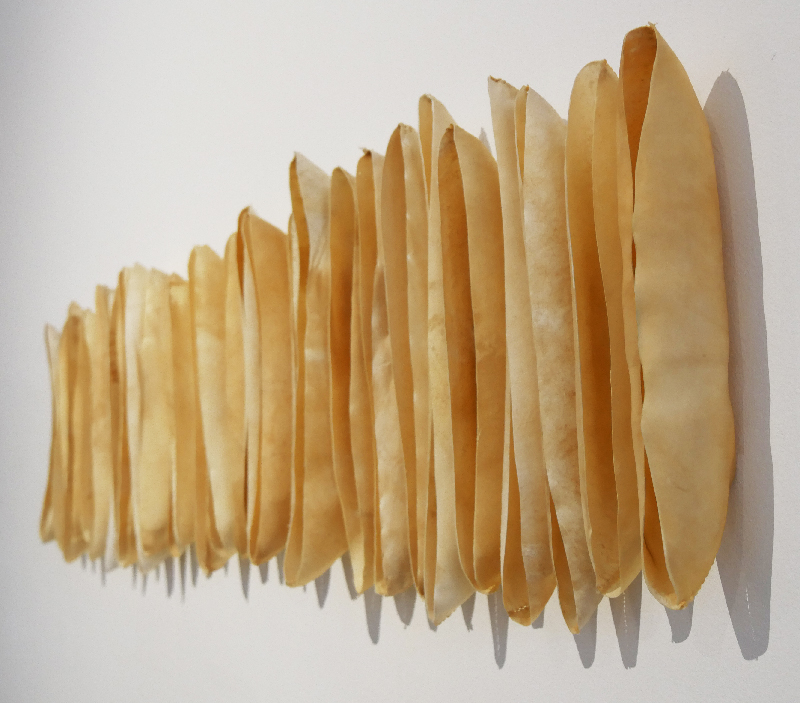
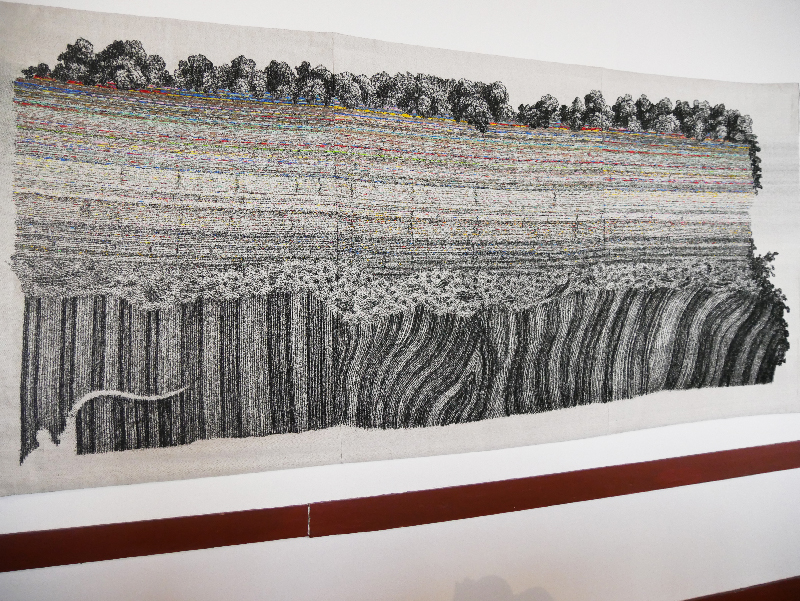
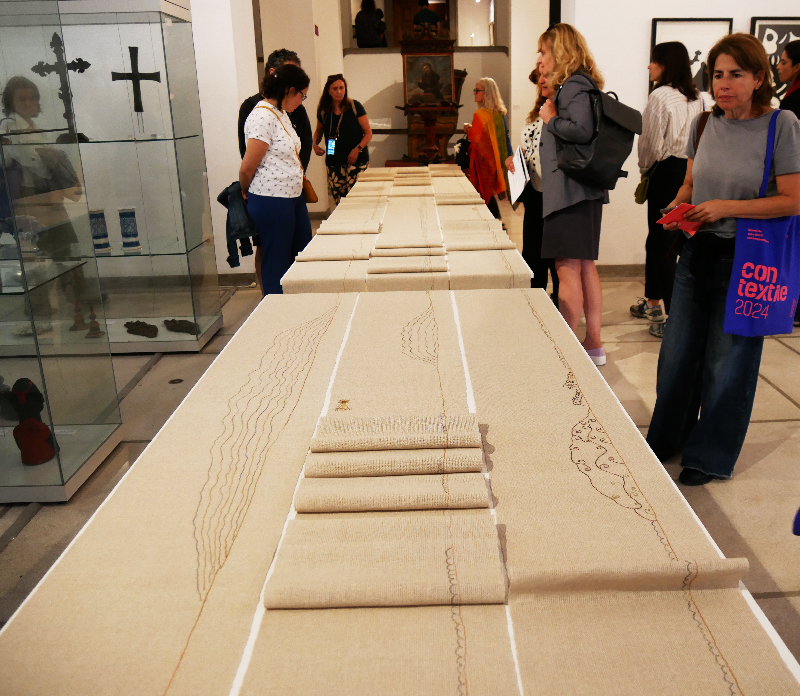
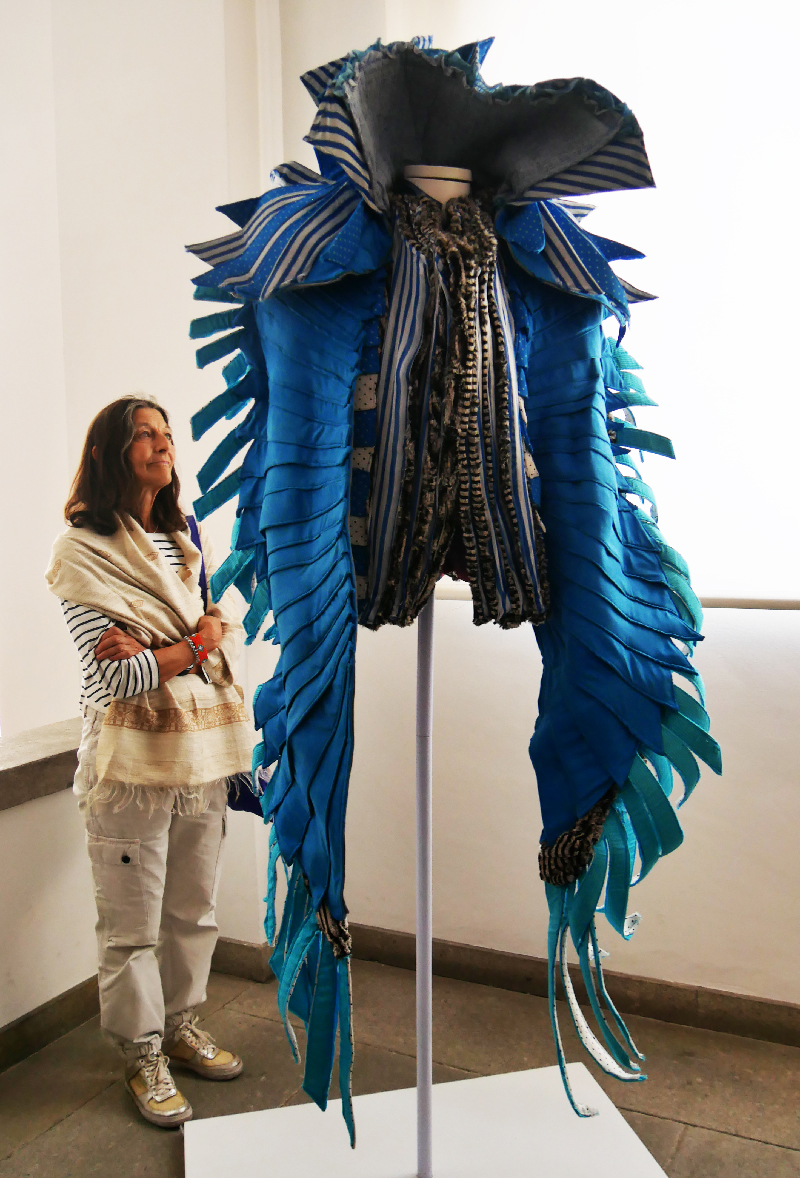
Die Bildungseinrichtungen aus Portugal hatten eine Extraausstellung, um die Leistungen ihrer Studierenden zu zeigen. Vertreten waren hier die Escola Artistica António Arroio aus Lissabon, die Escola Artistica Soares dos Reis aus Porto, die Escola Superior de Arte e Design aus Matosinhos, die Faculdade de belas Artes da Universidade de Lisboa, die Faculdade de Belas Artes da Universidade do Porto, die Universidade da Beira Interior aus Colvilha sowie die Escola de Arquitetura, Arte e Design da Universidade do Minho aus Guimaraes. Ich hatte den Eindruck, dass das Studium der Textilkunst und des Textildesigns bei jungen Leuten immer beliebter wird. Es wäre vielleicht eine gute Idee, eine Textilbiennale für junge Menschen zu veranstalten, wie sie in Lodz während der Internationalen Tapisserie-Triennale organisiert wird.
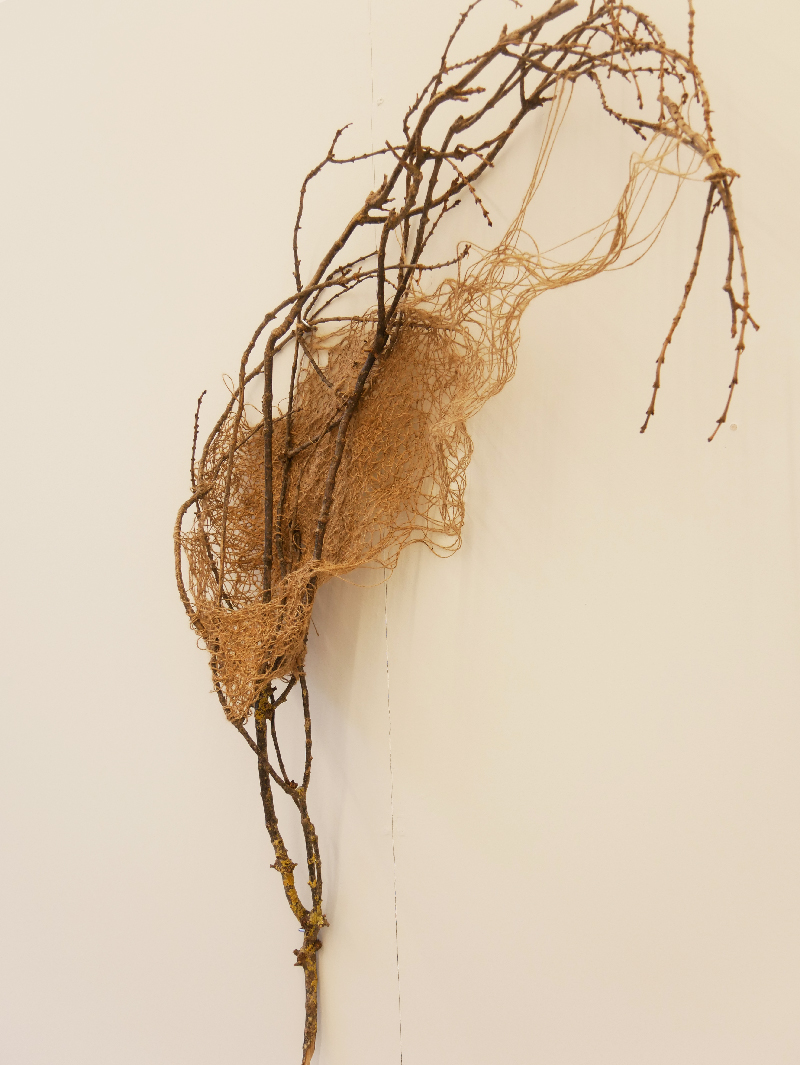
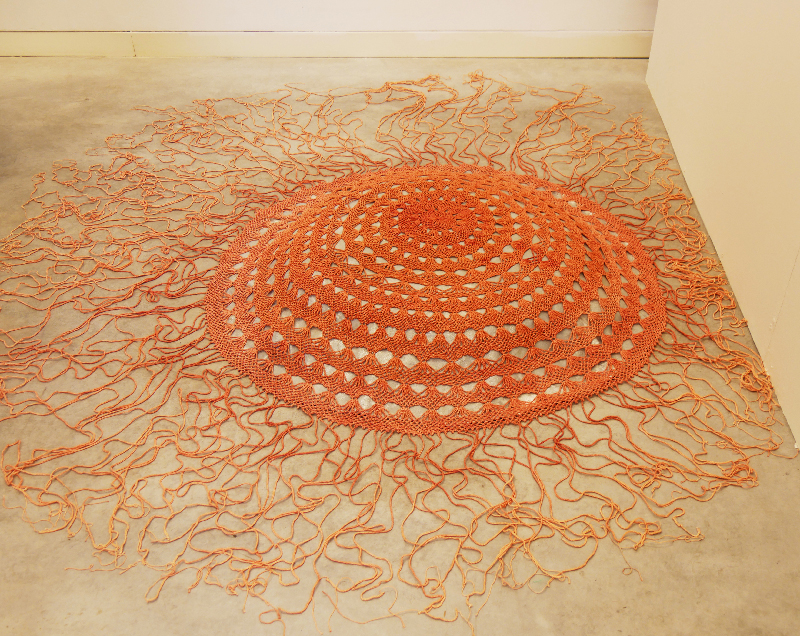
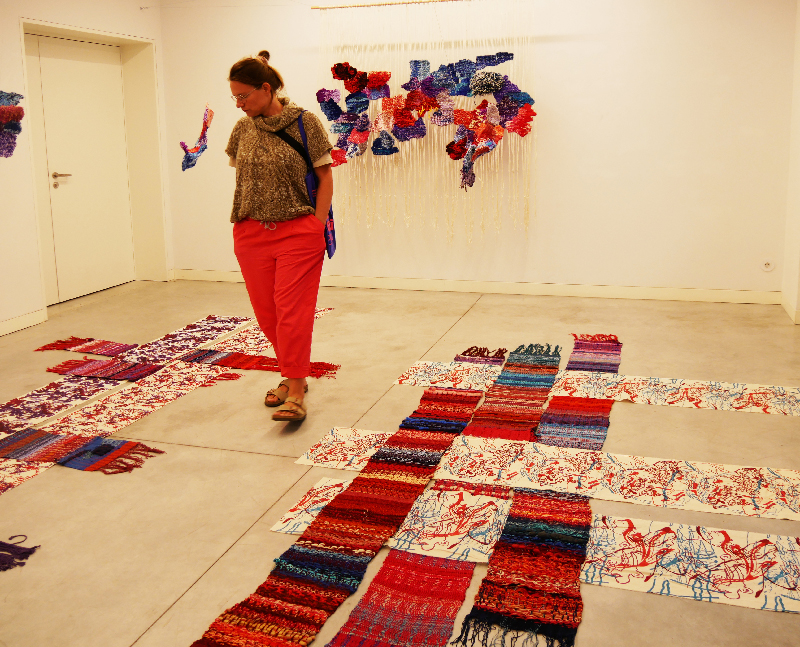
Eine echte Überraschung war die Ausstellung der Arbeiten „Threads of Memory“ von Josep Grau-Garriga (Sant Cugat del Válles, Spanien, 1929 – Angers, Frankreich, 2011), die zu den wichtigsten Protagonisten der innovativen Bewegung zählen. Die Ausstellung „The Threads of Memory“ vereint eine Sammlung textiler Arbeiten von Josep Grau-Garriga, die zwischen 1972 und 2000 entstanden sind. Die Auswahl rund um das Thema Erinnerung beleuchtet eigenwillige Aspekte des Schaffens des Künstlers, sowohl formal als auch inhaltlich.
Diese Ausstellung wurde von Lala de Dios und Esther Grau Quintana kuratiert, denen es gelang, eine große Anzahl der riesigen Tapisserien nach Guimaraes zu bringen. Ich kannte einige der Arbeiten von Fotos, aber sie in der Realität in riesigen Installationen zu sehen, war ziemlich überwältigend. Ich war nicht die Einzige, die Grau-Garriga als einen der großen Erneuerer der Tapisserie wiederentdeckt zu haben schien. Ich hörte viele junge Besucher zu Recht sagen, wie sehr sie von seiner Arbeit beeindruckt waren, und sich die Frage stellten, warum sie nichts von ihm wussten!
In der zweiten Hälfte des 20. Jahrhunderts veränderte sich die alte Tapisseriekunst endgültig. Von ihrem Ursprung als Wandmalerei über die Arbeiten in der Teppich- und Tapisseriewerkstatt in Sant Cygat, Barcelona, bis hin zu ihrer Zeit in der Werkstatt von Jean Lurçat, betrat die Tapisseriekunst das Feld der erweiterten Skulptur, indem zunächst Reliefs und Volumen und später der Raum eingeführt wurden unter Verwendung bescheidener und alltäglicher Fasern und Materialien, die weit von den reichen traditionellen Materialien der Tapisserien entfernt, aber mit enormer Stärke und Ausdruckskraft ausgestattet sind.
Grau-Garrigas Arbeit ist eine kontinuierliche Übung der persönlichen und kollektiven Erinnerung an das Territorium, in dem er lebte.
Die textile Innovation, die Grau-Garriga vertrat, betonte die greifbare Wiederaneignung der Schöpfung sowie die Integration von textilen Materialien voller Erinnerungen. Seine Kreationen werten die Berührung als wesentliches Element in Beziehungen zu uns selbst und zur Außenwelt neu auf.
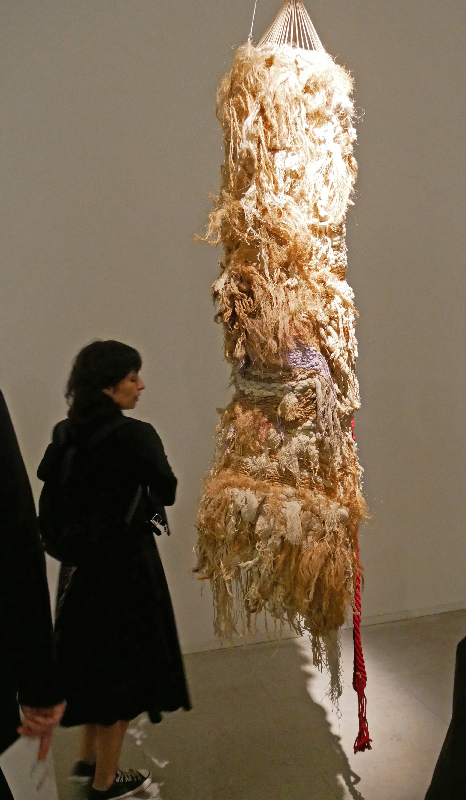
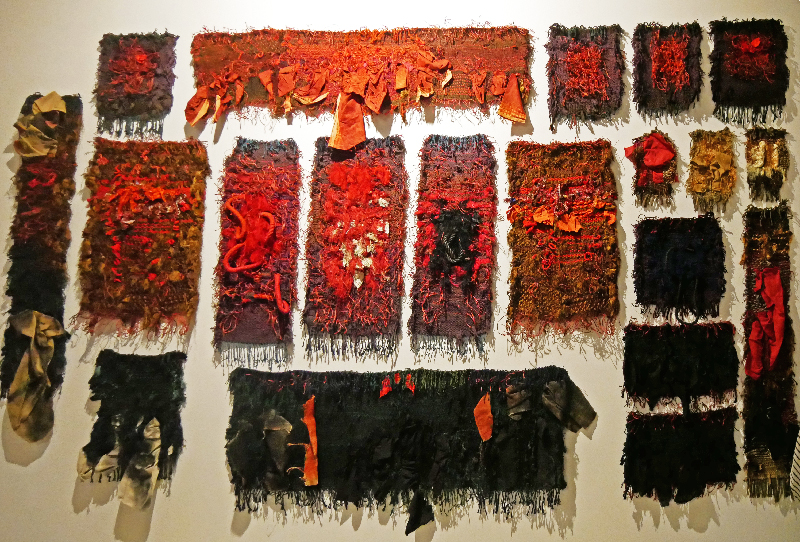
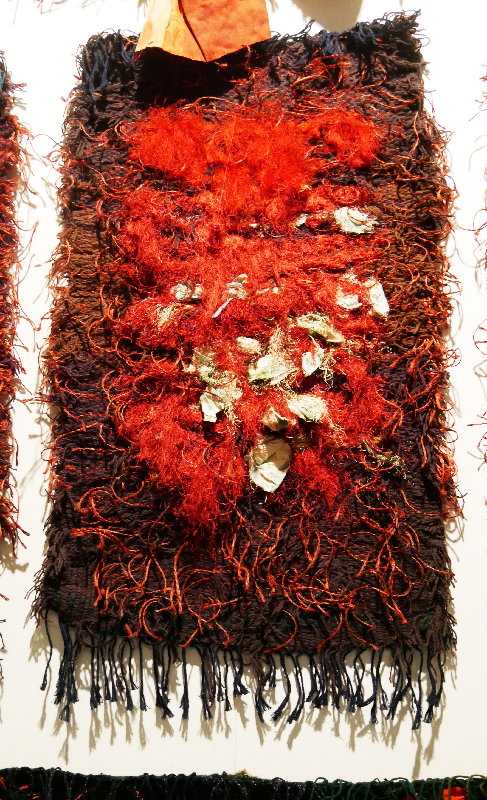
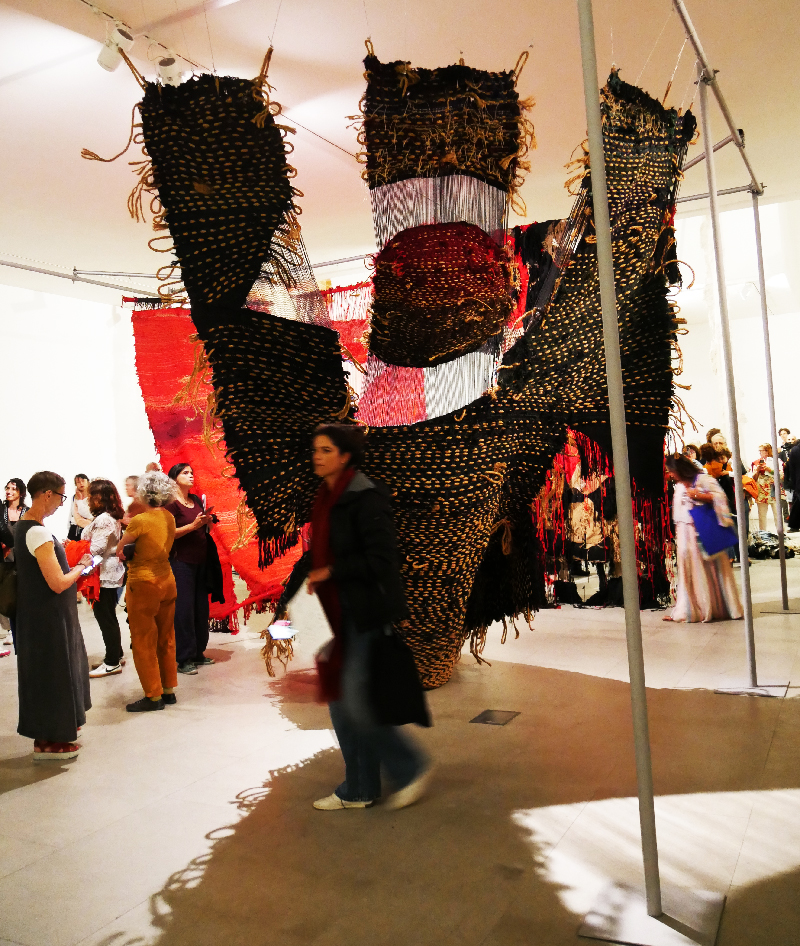
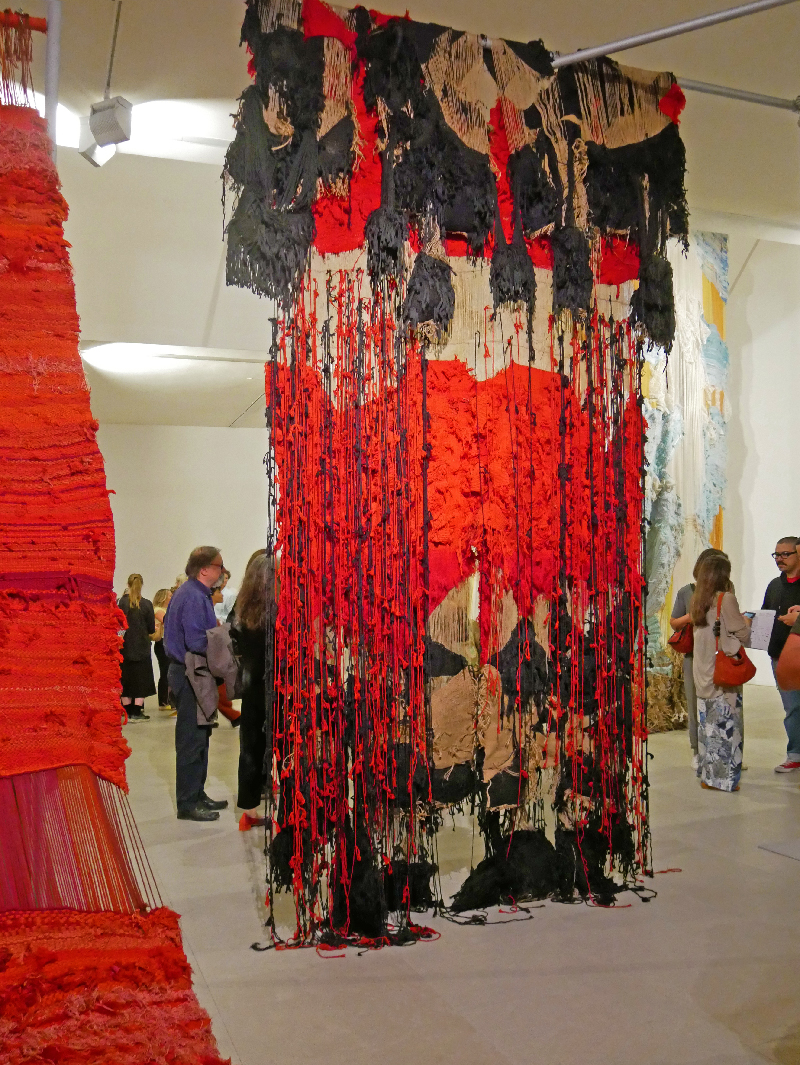
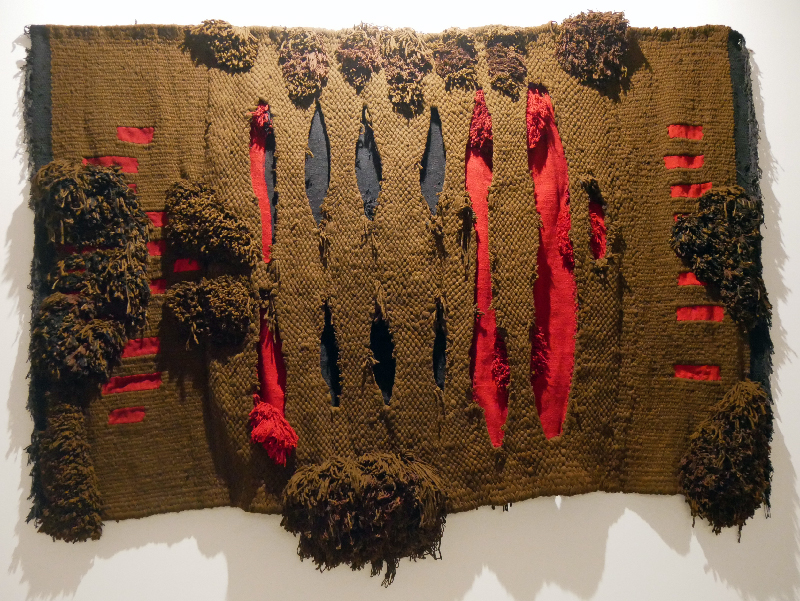
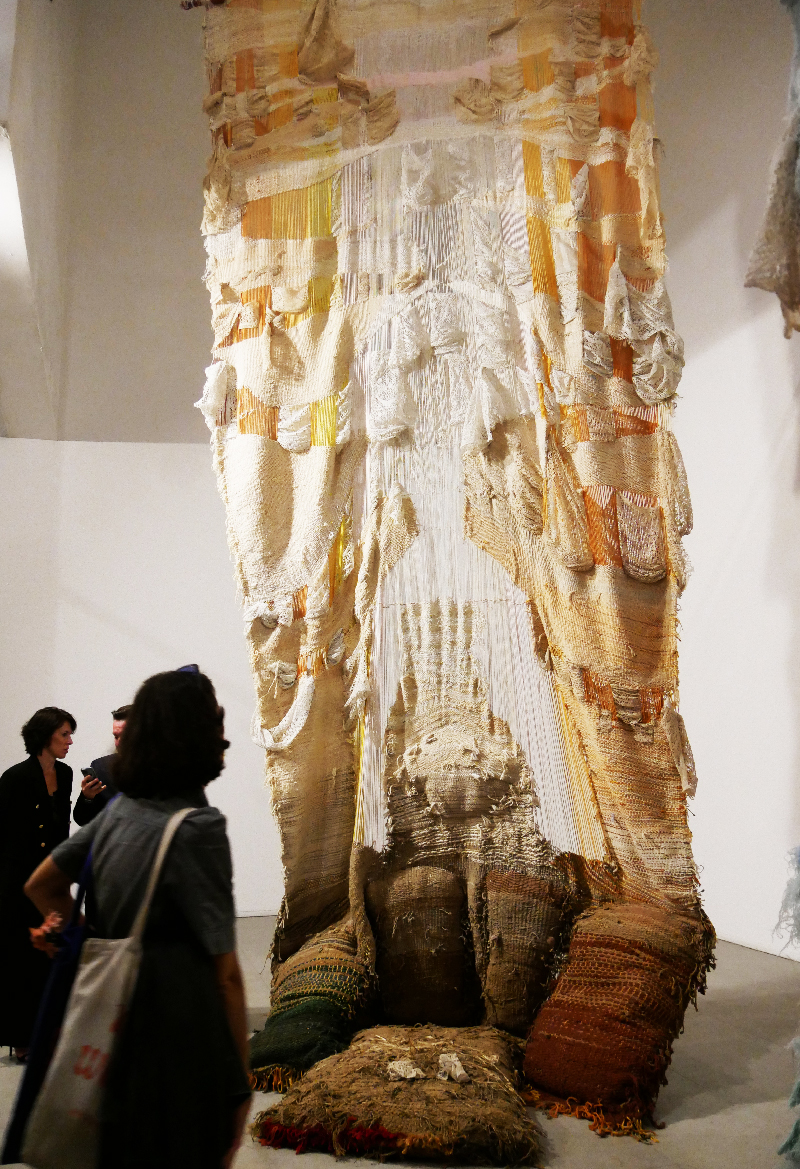
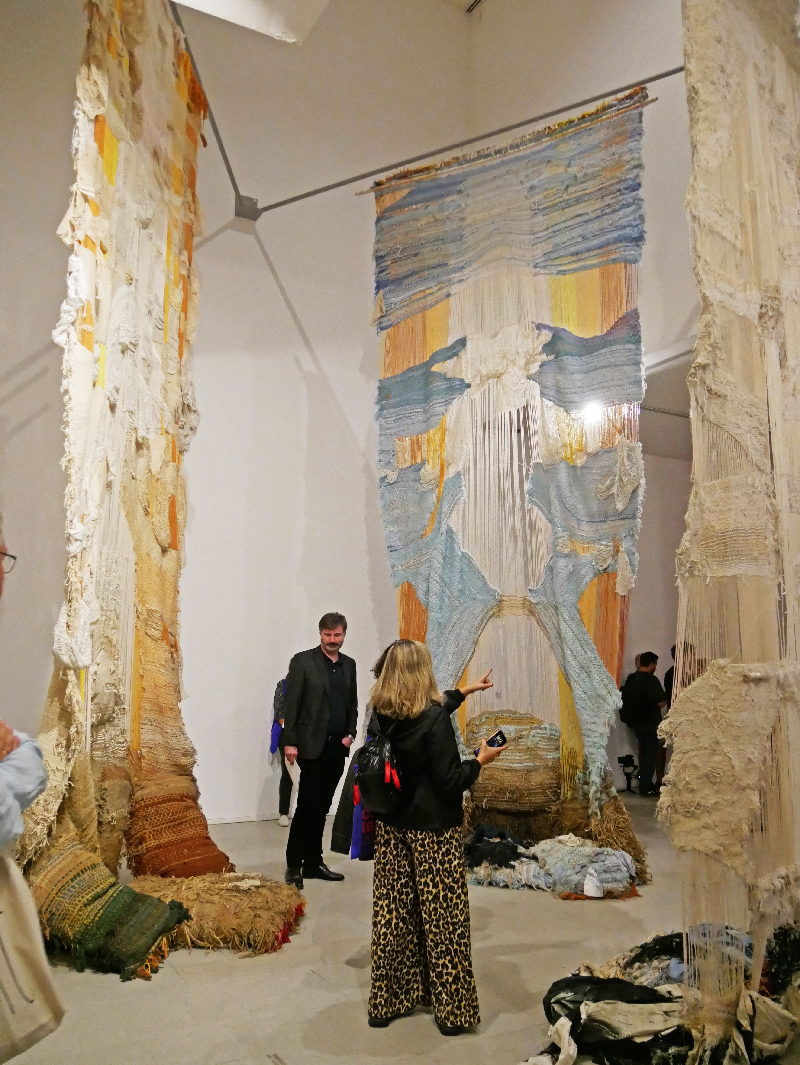
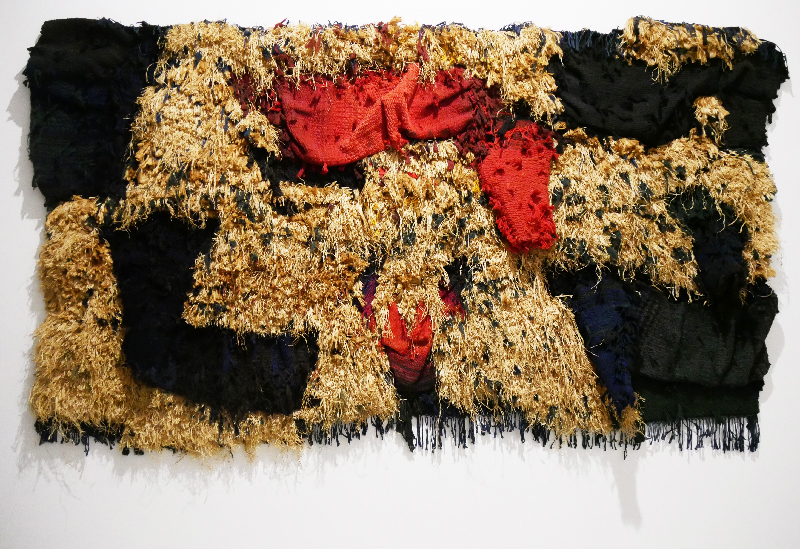
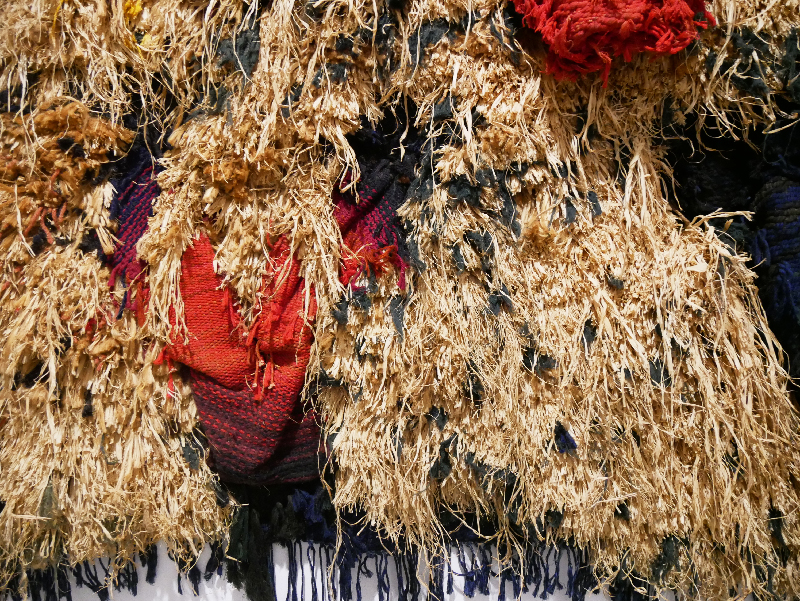
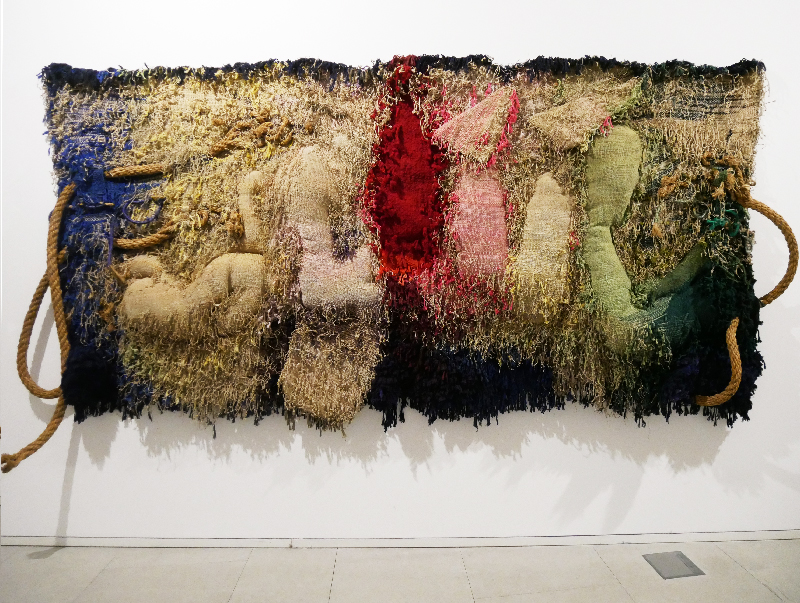
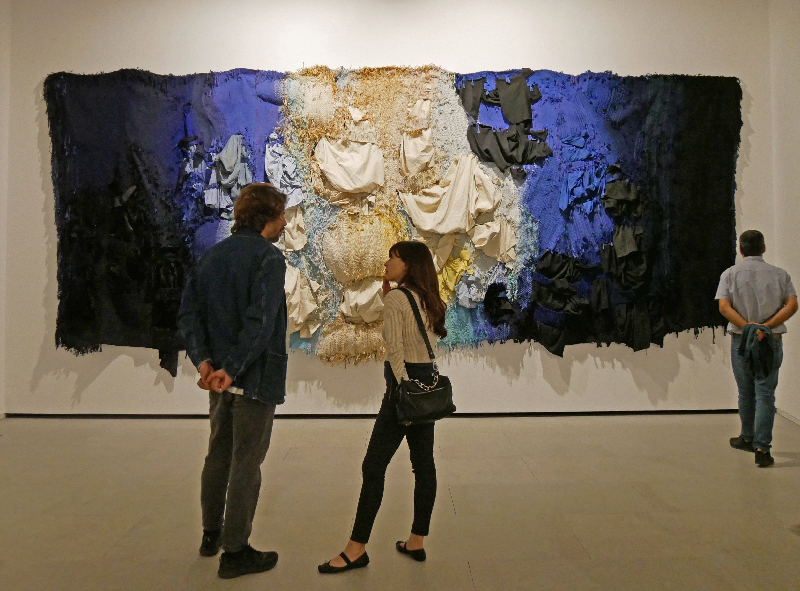

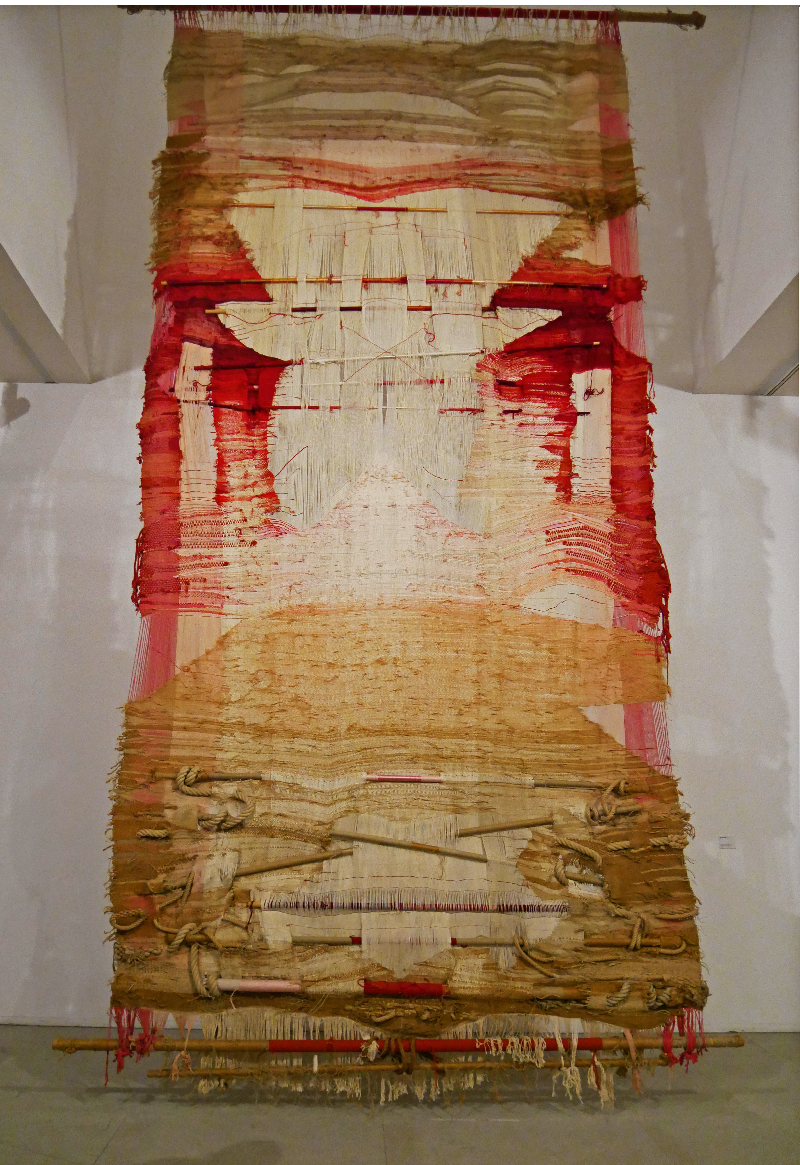
Der Konferenztag gab vielen Textilkünstlern die Gelegenheit, über ihre Projekte, Biennalen und geplanten Ausstellungen zu berichten, z.B. Assadour Markarov, der in China arbeitende bulgarische Textilkünstler, erzählte von der 5. Hangzhou Triennale für Textilkunst im Jahr 2025. Zara Orel stellte die Textilkunstbiennale BIEN in Slowenien vor. Esther Grau Quintana sprach über Josep Grau-Garriga: „Erinnerung als roter Faden in Grau-Garrigas Werk.“ Lala de Dios, Co-Kuratorin der Ausstellung, hielt den Vortrag „A Pioneer’s Work: from Traditional Tapestry to Contemporary Art“. Dann gab es einen Vortrag von Laura Siles aus Spanien über die Erforschung von Kreativität und Umweltbewusstsein. Domenika Krogulska-Czekalska aus Polen sprach über „Transcending Threads: Exploring Post-Textile Discourse in Activism“.
Ein weiteres persönliches Highlight kam für mich einen Tag später, als ich für einige Stunden an einem Workshop zum Herstellen von Papierfäden mit Mylene Boisvert aus Kanada teilnehmen konnte. Seitdem spinne ich gerne Papiergarne und lerne mehr über Maulbeerpapier, wie ich es einst in Usbekistan gesehen habe!
